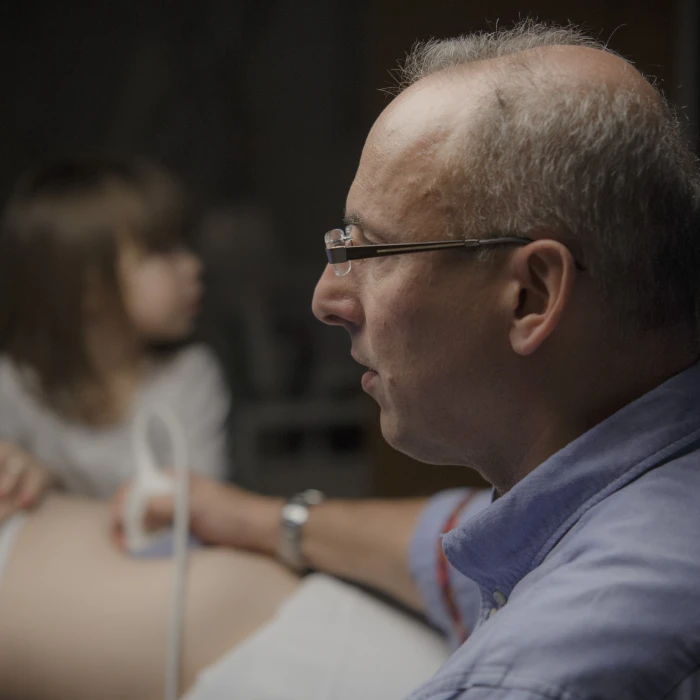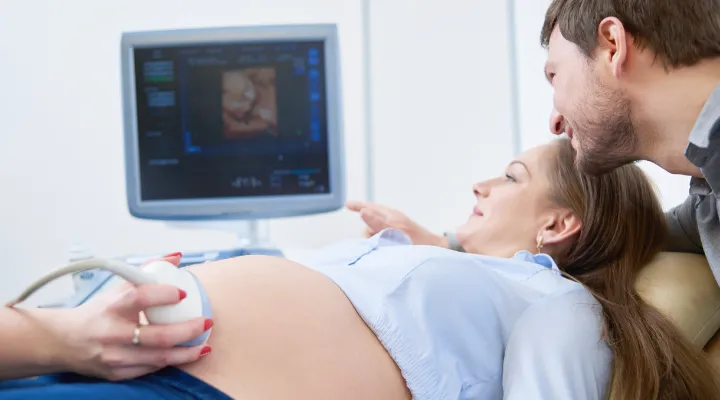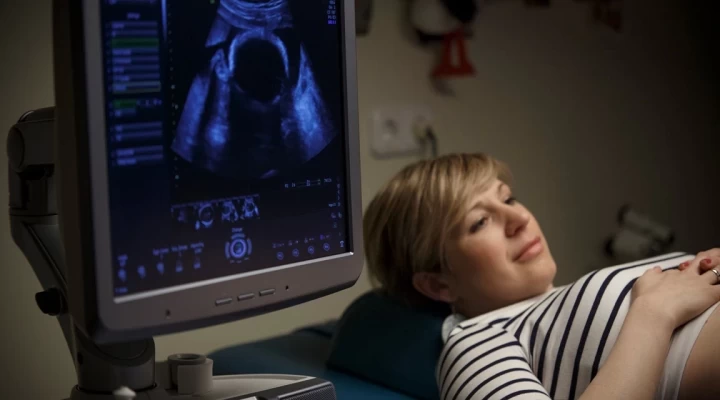After culturing, tinting, and conducting a microscopic examination of cells obtained through a needle injected through the mother’s abdominal wall, about a week after the sample was taken the data is available, and will be evaluated by the obstetrician and the geneticist. The two methods of obtaining fetal cells are amniocentesis and chorionic villus sampling.
The risk of miscarriage for both types of test is 0,5-1% (in single pregnancy), 0,2% (in twing pregnancy). It is rare, but other complications can also occur, such as bleeding, uterine contractions, leaking of amniotic fluid. Both tests are conducted on an outpatient basis. If there are no symptoms, patients are released 2 hours after the procedure.
Amniocentesis
The amniotic sac is a fluid-filled sac in which the fetus floats inside the uterus. During amniocentesis conducted after the 16th week of pregnancy, we take a sample of the fluid for genetic testing. The aim of the test is to diagnose any chromosomal abnormalities (quantitative or structural abnormalities of the chromosomes).
How is the sample taken?
As the first step in the test, we use ultrasound to determine the positions of the fetus and the placenta, then determine the ideal injection site. Then we disinfect the skin on the abdomen and inject a thin needle through the skin and the mother’s abdominal wall into the uterus while monitoring by ultrasound. Using a syringe, we take a sample (min 20 ml, max 30 ml) of the amniotic fluid surrounding the fetus.
After amniocentesis, karyotyping (laboratory examination of chromosomes) takes about 2,5-3 weeks, but it is possible to request a PCR test to examine the 21st, 13th, 18th and the sex chromosomes as well, for which results are known within 3-4 days after the procedure. Of course, full karyotyping should not be left out, as the PCR test examines only abnormalities of the aforementioned chromosomes.
Chorionic villus sampling (CVS)
During this test, we take a sample from the developing placenta through the abdominal wall after the 10th week of pregnancy. The aim of this test is to diagnose any chromosomal abnormalities (quantitative or structural abnormalities of the chromosomes).
How is the sample taken?
As the first step in the test, we use ultrasound to determine the positions of the fetus and the placenta, then determine the ideal injection site. Then we disinfect the skin on the abdomen and inject a thin needle through the skin and the mother’s abdominal wall into the placenta while monitoring by ultrasound. Using a syringe, we take a sample of the chorionic villi in the placenta.
The sample taken is then sent to the laboratory in a special fluid where the fetal genetic testing is carried out.
We also perform CGH micro-array and WES tests at our center. They can also screen for other minor genetic abnormalities (e.g. microdeletions in the case of array CGH, e.g. complete exome determination in the case of WES) that conventional karyotyping cannot.
Any questions before booking an appointment?
If you are unsure which doctor to see or what examination you require, we are here to help!
Simply request a free callback from one of our colleagues, who will help you find the right specialist based on your specific issue.






Reviews